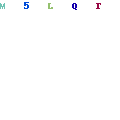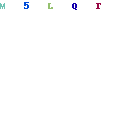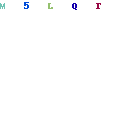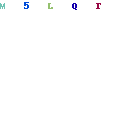1. Question
Which two network design features require Spanning Tree Protocol (STP) to ensure correct network operation? (Choose two.)- redundant links between Layer 2 switches
- removing single points of failure with multiple Layer 2 switches
2. Question
What is the outcome of a Layer 2 broadcast storm?- New traffic is discarded by the switch because it is unable to be processed.
3. Question
What is the purpose of the Spanning Tree Protocol (STP)?- prevents Layer 2 loops
4. Question
What is a characteristic of a Layer 2 loop?- Broadcast frames are forwarded back to the sending switch.
5. Question
What additional information is contained in the 12-bit extended system ID of a BPDU?- VLAN ID
6. Question
Which three components are combined to form a bridge ID?- extended system ID
- MAC address
- bridge priority
7. Question
Refer to the exhibit. Which switch will be elected the root bridge and which switch will place a port in blocking mode? (Choose two.) CCNA3 v6.0 Chapter 3 Exam 03
CCNA3 v6.0 Chapter 3 Exam 03- SW4 will get a port blocked.
- SW3 will become the root bridge.
8. Question
Refer to the exhibit. Which trunk link will not forward any traffic after the root bridge election process is complete? CCNA3 v6.0 Chapter 3 Exam 01
CCNA3 v6.0 Chapter 3 Exam 019. Question
Which protocol provides up to 16 instances of RSTP, combines many VLANs with the same physical and logical topology into a common RSTP instance, and provides support for PortFast, BPDU guard, BPDU filter, root guard, and loop guard?10. Question
Which Cisco switch feature ensures that configured switch edge ports do not cause Layer 2 loops if a port is mistakenly connected to another switch?- BPDU guard
11. Question
Which two types of spanning tree protocols can cause suboptimal traffic flows because they assume only one spanning-tree instance for the entire bridged network? (Choose two.)12. Question
Which spanning tree standard supports only one root bridge so that traffic from all VLANs flows over the same path?- 802.1D
13. Question
What is an advantage of PVST+?- PVST+ optimizes performance on the network through load sharing.
14. Question
In which two port states does a switch learn MAC addresses and process BPDUs in a PVST network? (Choose two.)- forwarding
- learning
15. Question
If no bridge priority is configured in PVST, which criteria is considered when electing the root bridge?- lowest MAC address
16. Question
Which RSTP ports are connected to end devices?- edge ports
17. Question
A network administrator is preparing the implementation of Rapid PVST+ on a production network. How are the Rapid PVST+ link types determined on the switch interfaces?- Link types are determined automatically.
18. Question
Which port state will switch ports immediately transition to when configured for PortFast?19. Question
Which STP priority configuration would ensure that a switch would always be the root switch?- spanning-tree vlan 10 priority 0
20. Question
Refer to the exhibit. What is the role of the SW3 switch? CCNA3 v6.0 Chapter 3 Exam 02
CCNA3 v6.0 Chapter 3 Exam 02- root bridge
21. Question
To obtain an overview of the spanning tree status of a switched network, a network engineer issues the show spanning-tree command on a switch. Which two items of information will this command display? (Choose two.)- The root bridge BID.
- The role of the ports in all VLANs.
22. Question
What port type is used to interconnect switches in a switch stack?23. Question
Match the spanning-tree feature with the protocol type. (Not all options are used.)
CCNA2 v6.0 Chapter 3 Exam 01
24. Question
Fill in the blank. Do not use abbreviations.
The spanning-tree mode rapid-pvst global configuration command is used to enable Rapid PVST+.25. Question
Open the PT Activity. Perform the tasks in the activity instructions and then answer the question.
Which switch is the root bridge?- Switch_4
Home »
» Cisco CCNA 3 Chapter 3 version 6.0 Exam Answers












0 commentaires:
Enregistrer un commentaire